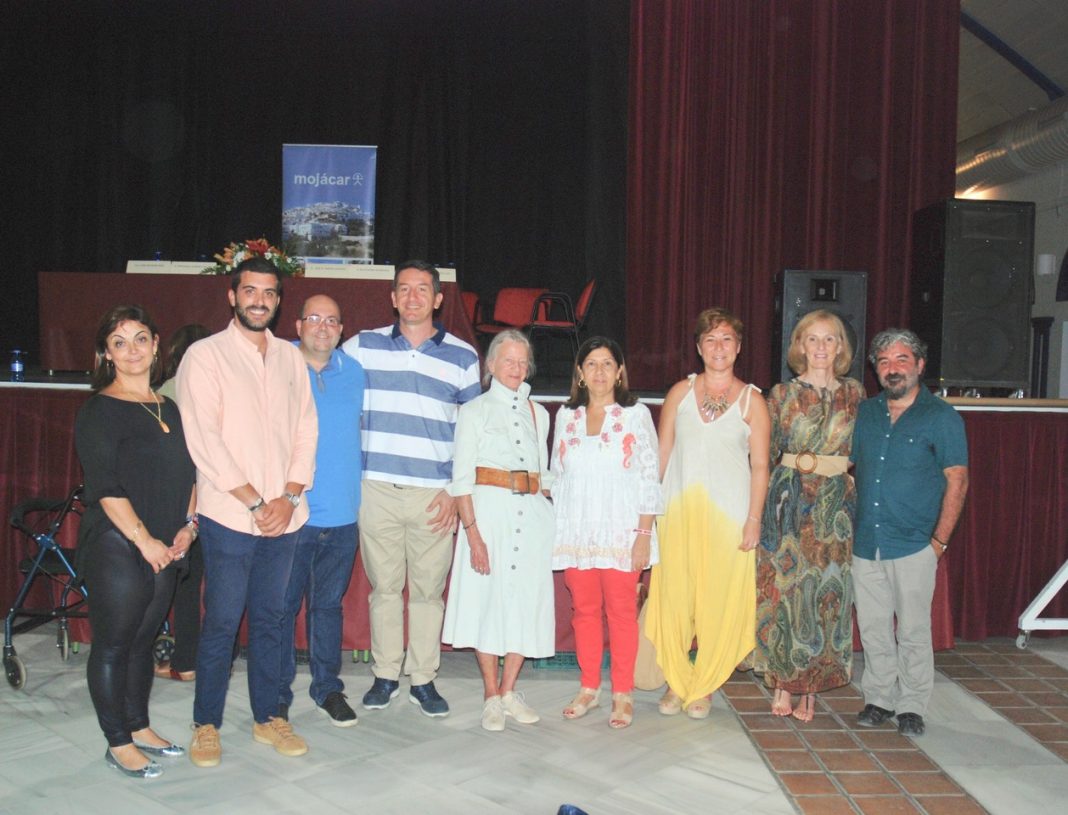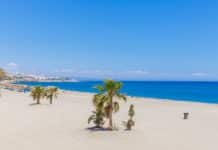The preliminary results of this summer’s archaeological dig on Mojácar la Vieja were recently presented at the town’s Centro de Usos Múltiples. The campaign was conducted for a second year by the University of Granada’s Biocultural MEMOLab Laboratory and Medieval History Department, with the support of Mojácar Council and the Valparaíso Foundation.
Mojácar’s Tourism Councillor, Emmanuel Agüero, opened the event with a welcome to the large audience that were keen to find out about the latest findings, along with the Mayor, Rosmari Cano and her Government Team, Valparaíso Foundation President, Beatrice Beckett and, Foundation Project Director, Teresa Santiago.
Emmanuel gave his thanks to the landowners around the excavation area for their collaboration, as well as to the people of Mojácar and the Council, along with the Valparaíso Foundation and the 100 plus archaeologists who were involved both on the site and with associated research.
Nine MEMOLab archaeologists have been drawing up their conclusions from the project so far from both a scientific and social point of view, explained its Director, José María Martín Civantos. As one of the first Islamic settlements in the area, it is of great importance to understand more about the people then in relation to the environment and, how Mojácar and its surroundings were then, both culturally and historically.
This summer’s campaign continued the work done during the previous year in investigating the wall, castle access and how the fortified upper sections functioned, with many new discoveries giving a better overall idea of life then.
The archaeologists present explained the different areas of study along with their final conclusions which have focused on the confirmation of the settlement’s creation in the 12th Century as a rural settlement that was taking on a more urban character by organizing the running and management of its territory.
There remains, however, the important question of how it was founded and where the people came from, either by the natural grouping of the nearby inhabitants or, by the Almoravid Dynasty building a castle to establish a more political, military settlement.
Although two major phases of construction have been recognised, many modifications have been found with a series of structural changes. Abandonment took place during the second half of the 13th century, indicating a relatively short, but intense period of activity.
The settlement’s move to the town’s current site was undoubtedly in order to have better defences and views of the coast on a site that would be easier to wall, with people living on the inside. The findings last year also confirmed serious problems then with land stability and although constant reforms were made, the wall and its towers as well as houses continued to collapse.
Next year, MEMOLab hopes to continue with the excavations, looking more into these origins and particularly the surrounding land in order to understand why the settlement was founded, what was there before and where the population came from, as well as the relationship between the Islamic powers and the rural communities in the area.
Looking ahead, there are new challenges given the importance of results and a medium-term research project will be presented to the Ministry of Culture on how and what form future investigations will take. The other challenge is the need, not only to advance the discoveries, but to consolidate and conserve what has already been found. According to Civantos, they already have a wealth of interesting scientific data which is in demand not only provincially, but throughout Spain. Also, the great call for information from around the world has been shown by the archaeologists from 22 countries that have taken part.
A strategy, parallel to the revelation of more secrets, is now needed to preserve and enhance Mojácar la Vieja and its heritage. There is a plan required to ensure that the excavations can be visited safely, without causing damage, as well as to create a museum and information centre in the town to display findings. Knowledge of the historical, cultural and social background of the town and its surrounding area is a valuable future project for not only Mojácar, but for the entire Region and Province.





